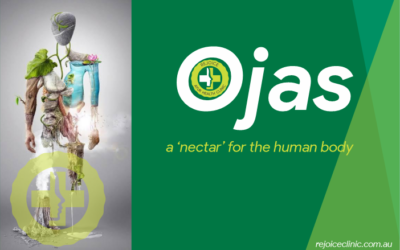Allergies
Ayurveda Clinic in Melbourne, Truganina
Allergies
An allergy refers to an exaggerated reaction by our immune system in response to bodily contact with certain foreign substances. It is exaggerated because these foreign substances are usually seen by the body as harmless and no response occurs in non- allergic people. Allergic people’s bodies recognise the foreign substance and one part of the immune system is turned activate. Allergy-producing substances are called “allergens.” Examples of allergens include pollens, dust mite, deodorants, cleaning products and foods. Ayurvedic Skin Types
The activities in the human system are controlled by the three bio-humors called dosha (Vata, Pitta & Kafha). Any disturbances in one or all of them can cause disease. The skin is also classified according to these bio-humors.
Skin types in Ayurveda:
- Vata skin is generally dry, cold, thin,, easily dehydrated, and is very vulnerable to the influence of dry windy weather.
- Pitta skin is mostly the Fire element, it tends to have more breakouts, photosensitivity, and less tolerance to hot food and fieriness in temperament. Pitta skin looks ruddy and is warm to the touch. Pitta skin types tend to be more prone to freckles and moles than the other skin types.
- Kapha dosha is predominantly Water and Earth, so Kapha skin tends to have these qualities – it can be greasy, thick and more tolerant of the sun. 0411114403 0466225556
Causes of Skin Allergy
Skin allergy is the body’s extreme reaction to one or more allergens. There are thousands of different allergens all around us and almost any substance in our environment can provoke an allergic reaction in someone (who is very sensitive).
Similarly, there may be cases of seasonal or acquired skin sensitivities that is caused due to a reactive type toxin called Ama-visha. This is the more dangerous counter part of the toxin Ama, which is usually created due to undigested food. If Ama is left to continue to accumulate in the digestive tract, it can spread to other tissues (dhatus) and organs. Eventually, the Ama interacts with the organs, tissues and functions of the body (sub-doshas) where if not flushed out, it settles and forms a reactive poison called Ama-visha. When an Asaatmya influence or allergen interacts with the Amavisha it can impair cell functioning and may manifest as rashes, discolouration, roughness or irritation
Types of Skin Allergy
There are four main types of skin allergy, each caused by different allergens. Fortunately, there are many ways to relieve the symptoms. But in order to choose an appropriate treatment, it’s important to identify which type of allergy you have.
Dermatitis (Twak shoth)
The Greek word ‘dermatitis’ means ‘inflammation of skin,’ it is caused by touching a certain substance. In most cases, the main symptom is a red rash, but it could be one of a number of allergens that causes it including metals, chemicals, rubber, plants and even pets.
Eczema (Vicharchika)
According to Charaka Samhita, eczema is a condition where the skin erupts into angry red rashes and bumps, along with profuse discharge, extreme itching and often blue discoloration.
Urticaria (Sheetapitta)
This type of allergy is often called nettle rash, because it comes up as an itchy red rash, raised in the middle. Confusingly, it has nothing to do with stinging nettles at all but is caused by eating a certain food, worms, infections or taking a particular drug.
Bites and stings (Keet dansh)
Irritation from insect bites and stings can be uncomfortable but reactions tend to be short-lived.
Prickly heat (Pittaja masoorika)
Warm weather often causes the itchy red rash known as prickly heat. The exact reason is not known till date, but some people think it’s due to sweat getting trapped under the skin.
Blisters (Visphota)
While blistering is most commonly known to occur when the skin is burnt, blisters can also result in skin conditions that are caused or worsened by allergens. For example, sufferers of eczema and contact dermatitis may experience skin blisters as one of the symptoms.
Fungal infections (Dadru)
Fungal infections are usually due to yeast (such as Candida) or dermatophytes such as Epidermophyton, and Microsporum. Fungi usually take up residence in moist areas of the body where skin surfaces meet like between the toes, in the genital area and under the breasts. These infections only affect the topmost layer of the epidermis and do not penetrate deeper.
Pruritus (Kandu)
Pruritus or itching is treated more as a symptom, precursor to a disease (purvarupa), complication (upadrava) or a symptom reflecting an incorrect prognosis (asadhya lakshana) of other systemic diseases. Thus, pruritus is treated if the root problem is treated and cured correctly.
Ayurvedic Treatment for Skin Allergy
In Ayurveda, allergies treated as a remove root cause with avoiding allergens, Herbals medicines, cleansing & lepa therapies, life and diet modification and yoga.
- Life Style: Cleanse the skin and hair properly
- Take time to exercise regularly
- Avoid exposure to the sun
- Avoid chemical-based lotion and potions
- Soak in an oatmeal and honey bath for natural allergy relief
- Balance pH and increase moisture.
- Keep your living quarters free of pollens and allergens
- (Remove old carpets, ensure that dust doesn’t accumulate in corners,
- Wash wollen bedding thoroughly
- Diet: Drink lots of water as one of the top natural remedies for allergies as it helps to detox
- Bitters foods should be taken regularly
- Avoid extra amount of proteins and fat
- Avoid difficult to digest food that tax the liver and cause Ama-visha
- Avoid the types of food which irritate your skin
- Spicy and sour foods should be avoided
- Make sure bowel movements are regular
- If you are allergic to gluten, it is advised to eat a gluten-free diet
- The same goes for any other food allergy or food sensitivity



